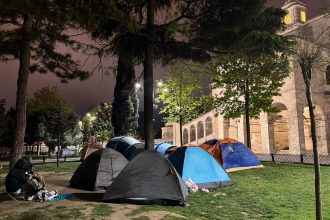BeyondHeadlines News Desk
New Delhi: Prof. M Asaduddin, Advisor to the Vice-Chancellor, JMI, delivered the Keynote address in the 2-day national seminar on “A Comparative Study of African American and Dalit and Minority Literature” organized by Dyal Singh College recently.
Prof. Asaduddin in his address pointed out that “just as we have minority institutions in India, in the USA they have what they call ‘Historically Black colleges and universities (HBCUs) spread across the country. He alluded to his personal experience in teaching in such a university, Winston Salem State University, in North Carolina, USA.
The profiles of students in the almost all-back American classroom were similar to the profiles of students in some minority institutions in India, he said.
Discussing broad similarities between Afro-American literature in the USA and Dalit literature in India, he pointed out two major differences that should be kept in mind. First, he said, ‘Blackness’ inscribed on the skin. Afro-American individuals, however, empowered they are, cannot escape the stigma wrongly associated with his/her skin colour.
‘Dalitness’, on the other hand, he said, is a social construction and a result of the caste system, and hence there are possibilities for an empowered Dalit to get away from the stranglehold of the caste system. There is no biological or racial determinism involved in the case of the Dalits.
Afro-American literature is written in the same language, i.e., English and there is certain homogeneity (despite internal differences that must be there) and continuity in it whereas Dalit literature is much more diverse, written in several Indian languages and spread across diverse geographies in India, he said.
Noting that minority literatures are rarely discussed, he said these articulate the perspectives of different minority groups in their efforts to seek accommodation in the dominant narrative of the ‘ídea of India’. He discussed minority literatures under four broad rubrics – ethnic, religious, linguistic and gendered minorities, and illustrated his formulations by providing examples from Indian English literature and literatures produced in different Indian languages.
In each case, he said, one finds how minority literature points to the erasures and fault lines in the dominant narrative of constructing the nation without giving adequate representation to marginal voices.
Dominant literary narratives emanating from major languages tend to ignore or stamp out minority voices, he said, adding minority literatures offer the much-needed correctives in the construction of the national literature by making a plea for a multi-voiced, pluralist narrative that will accommodate experiences and perspectives of all marginal groups.









